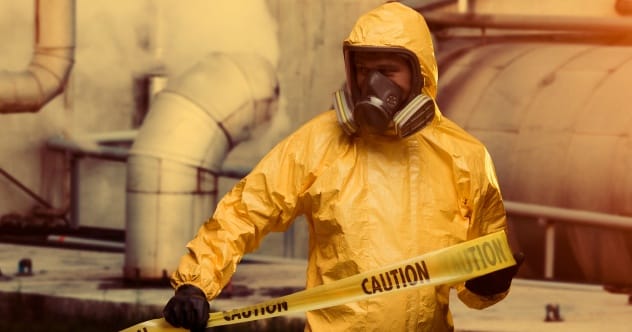Harnessing atomic power stands as one of humanity’s most significant achievements. Nuclear energy offers a clean and efficient power source, while radiation therapy provides a powerful tool against diseases like cancer. These advancements are truly remarkable.
However, it’s crucial to remain vigilant when dealing with radiation. You’ve likely heard of major incidents like Chernobyl and Fukushima. But you might think that unless you’re near a nuclear power plant, accidental irradiation isn’t a concern. That’s not always the case.
Here are 10 radiation accidents you might not know about. They’ve all occurred in the last few decades, and some may have happened closer to home than you think, affecting ordinary civilians in unexpected ways.
10 Therac-25 Machines (1985–1987)
The Therac-25, a radiotherapy machine developed by Atomic Energy of Canada Limited (AECL) in 1985, was designed to treat cancer patients. Five of these machines were used in the U.S. and six in Canada. Tragically, these machines were linked to six accidents between 1985 and 1987, resulting in three patient deaths from radiation poisoning.
Therac-25 machines targeted cancerous areas with a radiation beam. A key component was a flattening filter, designed to spread the high-powered beam and reduce its intensity. Previous models, Therac-6 and Therac-20, had a hardware lock to prevent firing without this filter. However, the Therac-25 replaced this physical safety measure with a software lock.
This software had a critical bug: typing commands too quickly could freeze the software lock. This allowed the machine to fire the unfiltered, full-power beam directly at the patient. How severe was the overdose? In one instance in Marietta, Georgia, a patient who should have received about 200 rads was estimated to have received between 15,000 and 20,000 rads. Compounding the problem, machine operators had grown accustomed to frequent, seemingly harmless errors. The machine’s display incorrectly showed “no dose” after delivering these massive amounts of radiation.
Patients described the sensation as an “intense electric shock” or a “red-hot sensation.” Due to the lethal doses from the unfiltered beam, only three of the six affected patients survived.
9 Kramatorsk, Ukraine (1989)
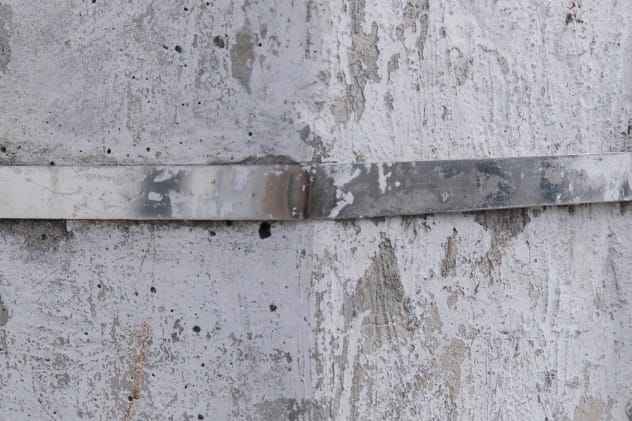
Imagine finding highly radioactive material embedded in the concrete wall right above a child’s bed. This nightmare became a reality for residents of Building 7 on Gvardeytsiv Kantemirovtsiv Street in Kramatorsk, Ukraine, in 1989.
Between 1980 and 1989, two families lived in Apartment 85. In the first family, the mother and two children sadly passed away from leukemia. In the second family, the eldest son died, and another child became seriously ill. The source of their suffering was only discovered when concerned residents requested a radiation test of their building.
Investigations revealed a capsule of cesium-137, a radioactive substance typically used in industrial monitoring devices, lodged within a concrete wall panel separating two apartments. It’s believed the capsule somehow fell into the raw materials used to manufacture the wall. The exact circumstances of how this happened remain unexplained.
A report on the incident mentioned that “source accountancy and control measures have by now been significantly strengthened in Ukraine,” and that raw materials are now monitored for radiation. This offered little comfort to those affected.
8 Kwale District, Kenya (1999)

In southeastern Kenya, a cost-saving measure had dangerous consequences. The government decided to repair a dirt road using materials from nearby Mrima Hill, instead of hauling rock from a quarry 19 kilometers (12 miles) away. This seemed like a practical decision at first.
However, Mrima Hill had been identified as dangerously radioactive eight years earlier. Geophysicist Jayanti Patel, who conducted the study, stated he had sent reports to all relevant government authorities, warning that “Sedimentary rock from the hill should not be used for either building homes or road constructions.”
The hill, in some areas, emitted radiation 50 times higher than what scientists consider safe. It contained radioactive elements like actinium, uranium, potassium-40, and, most concerningly for local health, thorium. Residents had reported mysterious deaths for years and were worried about contamination from the hill. Many felt that any corrective actions were too little, too late.
The government was assigned the task of monitoring the health of about 25,000 exposed individuals, removing 2,795 tons of the hazardous road material, and officially declaring the hill a protected, toxic area. Given the limited infrastructure in rural Kenya, it’s questionable whether locals received adequate medical care or if all the toxic material was safely removed.
7 Northwestern Georgia (2001)
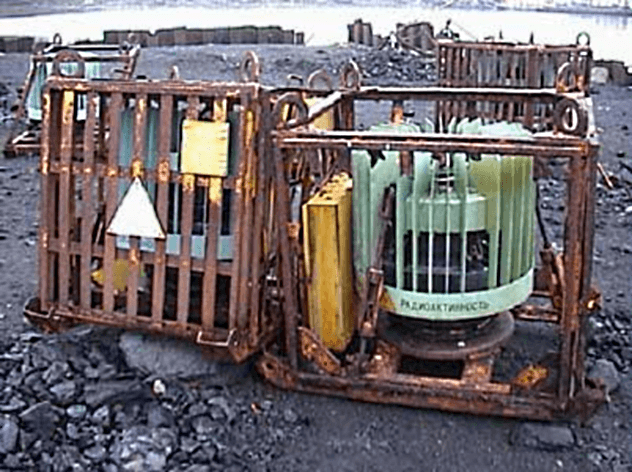
On Christmas Eve 2001, an urgent call reached the International Atomic Energy Agency (IAEA) Emergency Response Center from the nation of Georgia. Three woodcutters, trekking through remote mountains near the Abkhazian border, had stumbled upon two unusually warm containers. Seeing this as a fortunate find in the cold, they used the objects as “personal heaters” while sleeping in the woods overnight.
After about three hours, they began to experience nausea, headaches, dizziness, and vomiting. The woodcutters were hospitalized, and a few days later, severe burns appeared on their skin. Although their burns were serious and some got infected, all three reportedly made a full recovery. Hopefully, they learned a valuable lesson about avoiding strange, warm, abandoned objects.
The IAEA team investigated and found the sources: discarded Soviet radioisotope thermoelectric generators (RTGs). These devices, which convert heat from radioactive isotopes like strontium-90 into electricity, had been removed from their protective shielding. RTGs are used in satellites, space probes, and remote facilities. The origin of these particular generators remains unknown.
RTGs are so hazardous that the IAEA disposal team for this incident comprised 25 people. Each member was exposed to only 40 seconds of radiation while carefully moving the generators into secure, lead-lined drums.
6 Bialystok, Poland (2001)
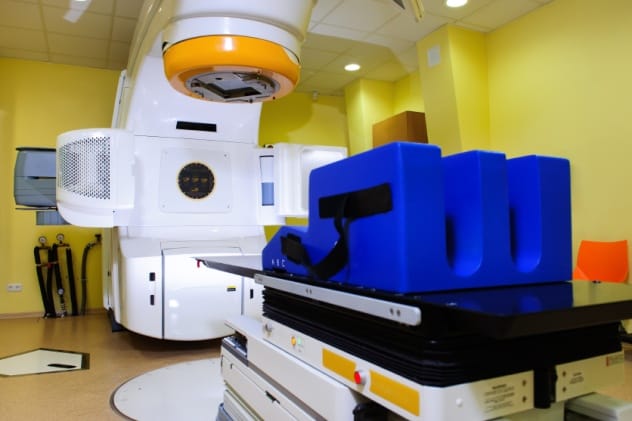
On February 27, 2001, a power outage at the Bialystok Oncology Centre in Poland affected its NEPTUN 10P radiotherapy machine during a breast cancer patient’s treatment. After power was restored and the machine checked, the therapy session resumed. Four additional patients were treated with the same machine that day, all undergoing post-surgical breast cancer treatment.
Following their treatments, the patients reported itching and burning sensations at the treatment site. Staff halted the use of the NEPTUN 10P and examined it. Dose output measurements revealed the machine was emitting significantly higher levels of radiation than intended. Further inspection showed that the machine’s dose monitoring system was malfunctioning, and an electrical component of its safety system was damaged.
The clinic had performed the correct checks according to the machine’s manual after restarting it. However, dosimetry testing (measuring the radiation dose) was not required after an emergency power shutoff. A report noted that power cuts were frequent in the hospital area, sometimes occurring twice a day. The radiation technologists’ past experiences indicated that the machine usually performed normally after power resumption.
All five patients suffered serious injuries, requiring surgery and skin grafts, though none of the injuries proved fatal. The attending doctor faced criminal negligence charges but was ultimately found not responsible. The hospital received a fine.
5 Glasgow (2006)

Lisa Norris, a 15-year-old Scottish teenager, was diagnosed with brain cancer and prescribed radiation therapy at the Beatson Oncology Center in Glasgow, Scotland.
Beatson used a computer system named Varis, with a module called Eclipse, for treatment planning. In May 2005, the Varis system was upgraded to Varis 7. This upgrade allowed electronic transfer of certain treatment plan data. However, for the most complex treatment plans, Beatson continued to use paper forms.
The new system introduced a change: if a specific feature was selected by the planning team, it altered data in the treatment plan relative to other reports. This feature was selected in Lisa Norris’s file. Unfortunately, the person transcribing data from the digital plan to paper forms was unaware of this difference and did not adjust the data. As a result, a figure entered on the paper form for one of the “critical treatment delivery parameters” was significantly higher than it should have been.
How much higher? Between January 5 and January 31, Lisa received radiation doses approximately 58 percent greater than intended. The skin on her head became red and blistered. Her parents reported that when she tried to take a cold shower, the water evaporated off her skin “as if you had put water in a hot pan, you could see it going to bubbles.”
Lisa sadly passed away on October 18, 2006. An official inquiry later concluded that her death was due to her tumor, not the radiation overdoses.
4 Arcata, California (2008)
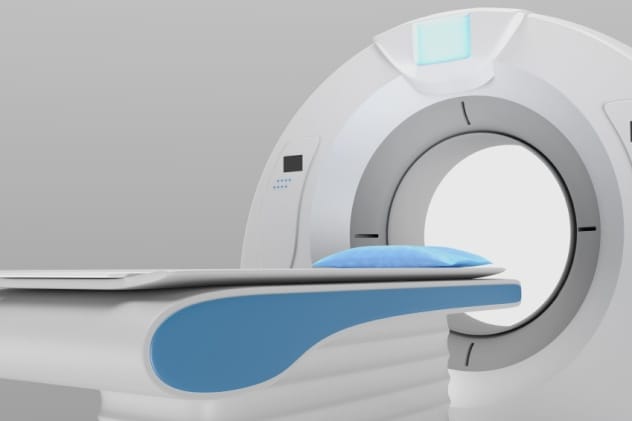
On January 23, 2008, Jacoby Roth’s parents took their two-year-old son to the ER at Mad River Hospital in Arcata, California. He had complained of neck pain after falling out of bed. Although he seemed fine, doctors ordered a CT scan of his cervical spine as a precaution. A typical CT scan lasts only a few minutes and takes about 25 images. Jacoby’s scan was stopped only after his parents complained; he had been scanned 151 times in the same area over 61 minutes.
Surprisingly, the machine itself didn’t appear to malfunction. (It was scheduled for replacement shortly after, coincidently). The CT scanner was in manual mode during Jacoby’s test. This meant the operator, Raven Knickerbocker, would have had to press the button to take an image each of the 151 times.
Knickerbocker, licensed since December 2000, left the hospital two weeks after the incident. Her license was suspended in September 2008. She provided several conflicting stories, claiming she only hit the button four to six times, that the parents distracted her, that the scanning table malfunctioned, or that the boy’s father leaned on the table. A state investigator concluded that even if any of these were true, she should have stopped the test immediately.
The Roths sued Knickerbocker and settled, with the terms remaining confidential. The hospital was fined $25,000, but this fine was dismissed on appeal, likely because the incident was attributed solely to operator error. Jacoby Roth appears happy and healthy, but blood tests show severe chromosomal damage. One expert believes he will likely develop cataracts in the future.
3 Rio De Janeiro (2011)

In October 2011, at The Venerable Hospital of the Third Order of St. Francis of Penance in Rio De Janeiro, Brazil, a seven-year-old girl named Maria Eduarda was undergoing treatment for acute lymphoblastic leukemia. This is a rare cancer most often found in children. First diagnosed in 2010, she had completed chemotherapy, but doctors then prescribed radiotherapy.
Soon after Maria began her radiation sessions, her parents became concerned as burns appeared on her skin. They reported this to Maria’s doctor, but their concerns were dismissed, as such burns can be a common side effect of the treatment.
However, the injuries to Maria’s head, including her scalp and ears, worsened. She soon started showing signs of brain damage, such as difficulty speaking and walking. Maria was eventually diagnosed with cutaneous radiation syndrome – severe radiation burns on her skin. The radiation had also begun to affect her brain, leading to a diagnosis of frontal lobe necrosis (death of brain tissue).
Tragically, Maria passed away in June 2012. The error in Maria’s case was not with the machine itself, but in calculating the number of radiotherapy sessions she was to receive. A processing error resulted in Maria being exposed to a full dose of radiation in each of her eight sessions. The physician responsible, along with two technicians, were later charged with manslaughter.
2 Asos Belts (2013)

If radioactive material doesn’t belong in our walls, it certainly shouldn’t be wrapped around our bodies. Yet, this is precisely what happened in January 2013. Alert U.S. Border Patrol agents discovered radioactive material in a shipment of studded belts from the online fashion retailer Asos. Specifically, the metal studs on the belts were radioactive.
Asos recalled the products, which had been sold in 14 different countries, and launched an internal investigation. An internal report somewhat alarmingly concluded, “Unfortunately, this incident is quite a common occurrence.” This is because some manufacturers in India and the Far East use scrap metal for their products. Scavengers looking for scrap metal sometimes find “orphaned” radioactive sources – materials that have been lost, abandoned, or improperly disposed of by authorities. If such a source is melted down with other raw materials, the radioactivity becomes trapped in the resulting metal alloy.
The belts, featuring 750–800 metal studs each, could have posed a danger if worn for over 500 hours (equivalent to about 20 days of continuous wear). It was alleged that Haq International, an Indian company, supplied Asos with 641 of these radioactive belts. However, Asos uses multiple suppliers, and Haq International disputed these claims.
Asos stated that it contacted all customers who had purchased the belts, and it appears the products were safely recalled.
1 Tepojaco, Mexico (2013)
On December 2, 2013, a white Volkswagen Worker truck was transporting a radioactive cobalt-60 teletherapy source. The source was being moved from a hospital to a radioactive waste storage center in Mexico. The truck was hijacked at a gas station in Tepojaco. The driver was forced out of the vehicle at gunpoint and tied up.
The International Atomic Energy Agency (IAEA) released a statement confirming the theft. They warned, “At the time the truck was stolen, the source was properly shielded. However, the source could be extremely dangerous to a person if removed from the shielding, or if it was damaged.”
The truck was eventually discovered near the town of Hueypoxtla, about 2.3 kilometers (1.4 miles) from where it was stolen. Crucially, the protective casing around the highly radioactive cobalt-60 source had been broken open. The source itself had been removed, though it was found abandoned nearby. Officials warned that anyone who had opened the material and handled the source would likely die from exposure to the deadly radiation. They anticipated the thieves would need hospital treatment, where their unique symptoms would make them easy to identify. However, no further information about the thieves ever became public, suggesting they were never found.
These incidents highlight the less-discussed risks of radiation that can affect anyone, anywhere. While the benefits of nuclear technology are undeniable, these stories serve as a stark reminder of the critical need for stringent safety protocols, rigorous oversight, and constant vigilance in handling radioactive materials in all their forms – from medical devices to industrial components and consumer goods.
What are your thoughts on these incidents? Were you aware of these hidden radiation dangers? Share your comments below!


